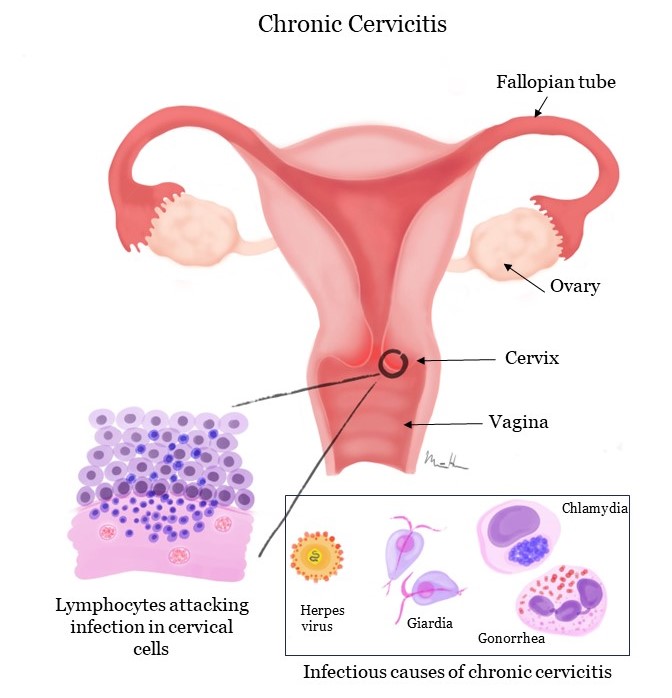By Meredith Herman DO and Jason Wasserman MD PhD FRCPC
January 5, 2024
Chronic cervicitis means prolonged inflammation cervix, specifically in the transformation zone between the ectocervix and the endocervix. It is a very common condition that may affect up to half of all women at some time during their adult life.
What are the symptoms of chronic cervicitis?
Most women with chronic cervicitis do not experience any symptoms and the condition is first identified during a routine pap test. However, for some women, symptoms may include discharge, bleeding, pain during intercourse, and occasionally, signs of pelvic inflammatory disease. During a gynecologic examination, the cervix will appear red and irritated. Further work-up with a Pap test or biopsy can help your provider understand the cause.
What causes chronic cervicitis?
The possible causes of chronic cervicitis are typically divided into two categories, infectious and non-infectious, with infectious causes being more common.
Sexually transmitted infections associated with chronic cervicitis include:
- Chlamydia
- Gonorrhea
- Herpes virus
- Human papilloma virus
- Syphilis
- Trichomoniasis
Non-infectious causes of chronic cervicitis include:
- Intrauterine devices (IUDs)
- Pessaries, tampons, and other feminine products placed in the vagina
- Chemical irritants
- Inflammation secondary to a ruptured cervical cyst
- Allergies to contents of spermicides or latex
- Bacterial overgrowth
What does this condition look like under the microscope?
Chronic cervicitis can be diagnosed under the microscope by a Pap test or cervical biopsy. Under microscopic examination, inflammatory cells (especially lymphocytes and plasma cells) are typically seen scattered throughout the epithelium that lines the surface of the cervix. Round groups of immune cells called lymphoid follicles may be seen in the tissue just below the epithelium.
The presence of an ulcer or necrosis (cell death) may be seen in infections caused by bacteria. Multinucleated giant cells (very large cells with multiple nuclei) may be seen in cases caused by viral infections. If an infectious cause is suspected, your healthcare provider may take swabs to send to microbiology to identify the causative organism.

About this article
This article was written by doctors to help you read and understand your pathology report. Contact us if you have any questions about this article or your pathology report. Read this article for a more general introduction to the parts of a typical pathology report.


